How Global Events Impact Precious Metal Prices
Precious metals like gold and silver are more than investment assets—they’re safe havens during uncertain times. Their prices often fluctuate in response to global events and geopolitical uncertainties, making them a key consideration for anyone looking to protect their...

Precious metals like gold and silver are more than investment assets—they’re safe havens during uncertain times. Their prices often fluctuate in response to global events and geopolitical uncertainties, making them a key consideration for anyone looking to protect their wealth. Understanding how events around the world influence these metals’ values can help investors make more intelligent, more strategic decisions.
In this post, we’ll dive into the major types of global events that impact precious metal prices and explore how you can use these insights to guide your investment choices.
1. Understanding Precious Metals
Precious metals, including gold, silver, and platinum, have been highly valued for centuries due to their rarity, durability, and versatility. These metals are cherished for their aesthetic appeal in jewelry and play crucial roles in various industries, such as electronics and medicine. They offer a hedge against economic uncertainty and market volatility as investment assets.
Understanding the dynamics of precious metals is crucial for investors. Market trends, geopolitical events, and economic uncertainty can all profoundly influence their prices. For instance, during geopolitical tensions or economic downturns, the demand for these metals often rises as they are perceived as safe havens. By staying informed about these factors, investors can better navigate the complexities of the precious metals market and make more strategic investment decisions.
What Drives the Price of Gold?
Gold prices are influenced by a combination of factors, including supply and demand, central bank reserves, and the value of the US dollar. When demand for gold is high, prices tend to rise, while a surplus of gold can lead to lower prices. Central banks play a significant role in the gold market, holding substantial gold reserves and influencing prices through their buying and selling activities.
The value of the US dollar also profoundly influences gold prices. A weaker dollar makes gold more affordable for buyers using other currencies, often leading to higher prices. Conversely, a stronger dollar can make gold more expensive internationally, potentially reducing demand. By understanding these dynamics, investors can better anticipate gold price movements and make informed decisions.
Gold Demand and Its Impact on Prices
Gold demand comes from various sources, including jewelry, industrial applications, and investment. Jewelry demand is a significant driver of gold prices, accounting for a large portion of global gold demand. Industrial demand, particularly in electronics and medicine, also plays a crucial role in shaping gold prices.
Investment demand, including exchange-traded funds (ETFs) and central bank reserves, can significantly impact gold prices, especially during economic uncertainty. When investors seek to protect their wealth against inflation or market volatility, the demand for gold often increases, driving up prices. Monitoring these demand sources can give investors valuable insights into potential price movements.
1. Economic Instability: Precious Metals as Safe Havens
How Economic Downturns Drive Demand for Gold and Silver
When economic uncertainty hits, many investors seek refuge in less vulnerable assets to inflation or market crashes. Central banks also utilize precious metals, such as gold and silver, as reserve assets to maintain stability and provide monetary insurance during economic uncertainties. Gold and silver tend to rise in value during recessions, currency devaluations, or when inflation surges because they retain purchasing power more effectively than traditional fiat currencies.
For instance, during the 2008 financial crisis, gold prices soared as investors sought ways to shield their portfolios from volatility. Understanding these cycles can help investors determine when to buy and sell precious metals for maximum return.
The Role of Interest Rates
Interest rates are another significant factor. Gold and silver become more attractive when central banks lower rates to stimulate the economy. Low-interest environments reduce the opportunity cost of holding precious metals, leading to increased demand. Conversely, rising interest rates can make these metals slightly less appealing than income-generating assets like bonds, but they still retain strong appeal as hedge assets.
2. Geopolitical Tensions: The Influence of War and Conflict
How Wars and Conflicts Drive Precious Metal Prices
Geopolitical tensions, such as military conflicts or trade disputes, create uncertainty in global markets, often driving up the prices of gold and silver. Disruptions in gold supply, mainly due to conflicts, can also lead to fluctuations in gold prices as investors turn to gold as a haven during periods of uncertainty. These metals are a universal currency investors trust when political systems are unstable or at risk.
A prime example is the Russia-Ukraine conflict, which led to spikes in gold prices as European and global investors sought security against the unknown. Gold and silver provide liquidity and reliability that stocks, bonds, or even fiat currencies cannot match during uncertain times.
Trade Disputes and Sanctions: A Catalyst for Precious Metals
Sanctions and trade restrictions can disrupt economic stability, particularly involving major financial players like the U.S., China, or the European Union. Precious metals often see increased demand as investors try to avoid exposure to sectors impacted by the sanctions or trade barriers. Understanding how these policies affect large nations' supply chains and economic performance can provide insights into when precious metals might see price spikes.
3. Currency Fluctuations: How Exchange Rates Affect Precious Metals
The Dollar and Gold’s Inverse Relationship
Gold and silver prices are often quoted in U.S. dollars, meaning the dollar's strength fluctuations can significantly impact these prices. When the dollar strengthens, precious metals can become more expensive for international buyers, potentially reducing demand and driving prices down. Conversely, a weaker dollar makes gold and silver more affordable, boosting demand and often leading to price increases.
Emerging Market Currencies and Demand
Currency volatility in emerging markets also plays a role. In countries where local currencies are prone to high inflation or depreciation, such as Venezuela or Turkey, gold and silver are often considered safer stores of value. As a result, demand for these metals can rise in these regions, driving up global prices.
4. Supply Chain Disruptions: Impact on Precious Metal Availability
Mining and Production Challenges

Supply chain disruptions, such as those caused by natural disasters, labor strikes, or regulatory changes, can impact the availability of precious metals. Mining delays or reduced output can tighten supply, causing prices to rise. For example, during the COVID-19 pandemic, mining operations worldwide faced interruptions, which led to temporary spikes in precious metal prices.
Environmental Policies and Their Effects
Environmental regulations and policies, especially those concerning emissions and waste, can also impact the supply of precious metals. Stricter policies often mean higher production costs, which can, in turn, affect prices. Countries like China, which produce significant amounts of silver, have seen price changes in response to environmental policy shifts.
5. Financial Market Dynamics: Precious Metals and Stock Market Correlation
Stock Market Volatility and Precious Metals
When stock markets experience significant downturns, investors often pivot to assets that are less susceptible to market-driven fluctuations, including gold and silver. Precious metals are known for their low correlation to stocks, making them attractive during market corrections. By monitoring stock market trends and investor sentiment, you can better predict when demand for metals like gold and silver might rise.
ETFs and Paper Gold's Influence
The popularity of exchange-traded funds (ETFs) that invest in precious metals has introduced new dynamics into the market. Demand increases as more investors flock to gold and silver ETFs, which can push prices higher. However, these ETFs also create a more volatile pricing environment since they enable large groups of investors to move in and out of the precious metals market more easily.
How Investors Can Navigate Price Fluctuations
Diversify to Balance Risk
One of the best ways to protect your investment is to diversify across various asset classes. Including a mix of physical gold and silver, ETFs, and other investment vehicles can help you mitigate risks associated with global events.
Monitor Global News and Economic Indicators
Staying informed about global events, central bank policies, and currency trends can help you anticipate potential price movements. Pay close attention to geopolitical developments and economic reports to gauge when precious metals might offer the most strategic value.
Work with a Trusted Dealer
Choosing a reputable precious metals dealer can make a significant difference. Transparent pricing, quality assurance, and expert guidance are essential when investing significantly in gold and silver. A trusted dealer can also provide insights into current market trends and help you time your purchases effectively.
8. The Future of Precious Metals and Gold Prices
The future of precious metals and gold prices is uncertain, but several factors will likely influence their trajectory. Geopolitical tensions, economic uncertainty, and central bank policies will continue to impact gold prices. For instance, ongoing geopolitical tensions can increase demand for gold as a safe haven, driving higher prices.
The rise of emerging markets and increasing demand for gold from these regions may also drive up prices. As economies in countries like China and India grow, their demand for gold, both for jewelry and investment, is likely to increase. Additionally, the growing trend of central banks diversifying their reserves and investing in gold may provide valuable insights into the future of gold prices.
In conclusion, understanding precious metals and gold prices requires a comprehensive analysis of various factors, including market trends, geopolitical events, and economic uncertainty. By staying informed about these factors, investors can make informed decisions about their investments and navigate the complex world of precious metals.
Final Thoughts: Precious Metals as a Strategic Investment
Precious metals have long been valued as financial security in volatile times. By understanding how global events—from wars to economic shifts—impact their prices, you’ll be better equipped to make informed investment decisions. Gold, silver, and other metals offer stability and reliability in a way few other assets can, making them a strategic choice for safeguarding wealth against the uncertainties of the modern world.

Frequently Asked Questions (FAQs)
How do global recessions affect precious metal prices?
During global recessions, investors flock to precious metals like gold and silver for stability, as these metals are less susceptible to inflation and currency devaluation. This increased demand typically pushes prices up as people seek safe havens to preserve their wealth.
Why do geopolitical events like wars or conflicts increase the value of precious metals?
Wars and geopolitical conflicts introduce uncertainty, which often disrupts traditional investment markets. Precious metals are seen as a hedge against this uncertainty, leading to increased demand and rising prices as investors seek out reliable, tangible assets.
How do currency fluctuations, particularly in the U.S. dollar, impact precious metals?
Precious metals are usually priced in U.S. dollars, so when the dollar weakens, these metals become cheaper for buyers using other currencies, increasing demand. Conversely, a strong dollar can make precious metals more expensive internationally, potentially reducing demand and lowering prices.
Can environmental policies and regulations affect the price of precious metals?
Yes, stricter environmental policies can increase production costs or limit supply in mining operations, leading to tighter supply and potential price increases. This is particularly true in countries with significant metal reserves where mining practices are heavily regulated.
How does inflation impact the price of precious metals like gold and silver?
Precious metals are often viewed as inflation hedges, meaning they retain value as the purchasing power of fiat currencies declines. When inflation rises, demand for gold and silver usually increases, increasing prices as investors seek to protect their wealth.
Are precious metals affected by stock market volatility?
Absolutely. Precious metals are generally uncorrelated with the stock market, making them a go-to asset during periods of stock market instability. As stocks drop, investors often move to gold and silver, increasing their demand and, consequently, their prices.
How do trade sanctions and tariffs impact precious metal prices?
Trade sanctions and tariffs can disrupt global supply chains, leading to shortages or delays in metal production. This often results in tighter supply and can drive up prices, especially if the affected country is a significant producer or consumer of the metals.
Can investing in ETFs or paper gold affect physical gold prices?
A: Yes, the popularity of gold and silver ETFs has created a larger, more liquid market for precious metals, which can impact pricing. Large buy or sell movements in these ETFs can influence the physical metal market, although physical demand often provides a stabilizing effect over the long term.
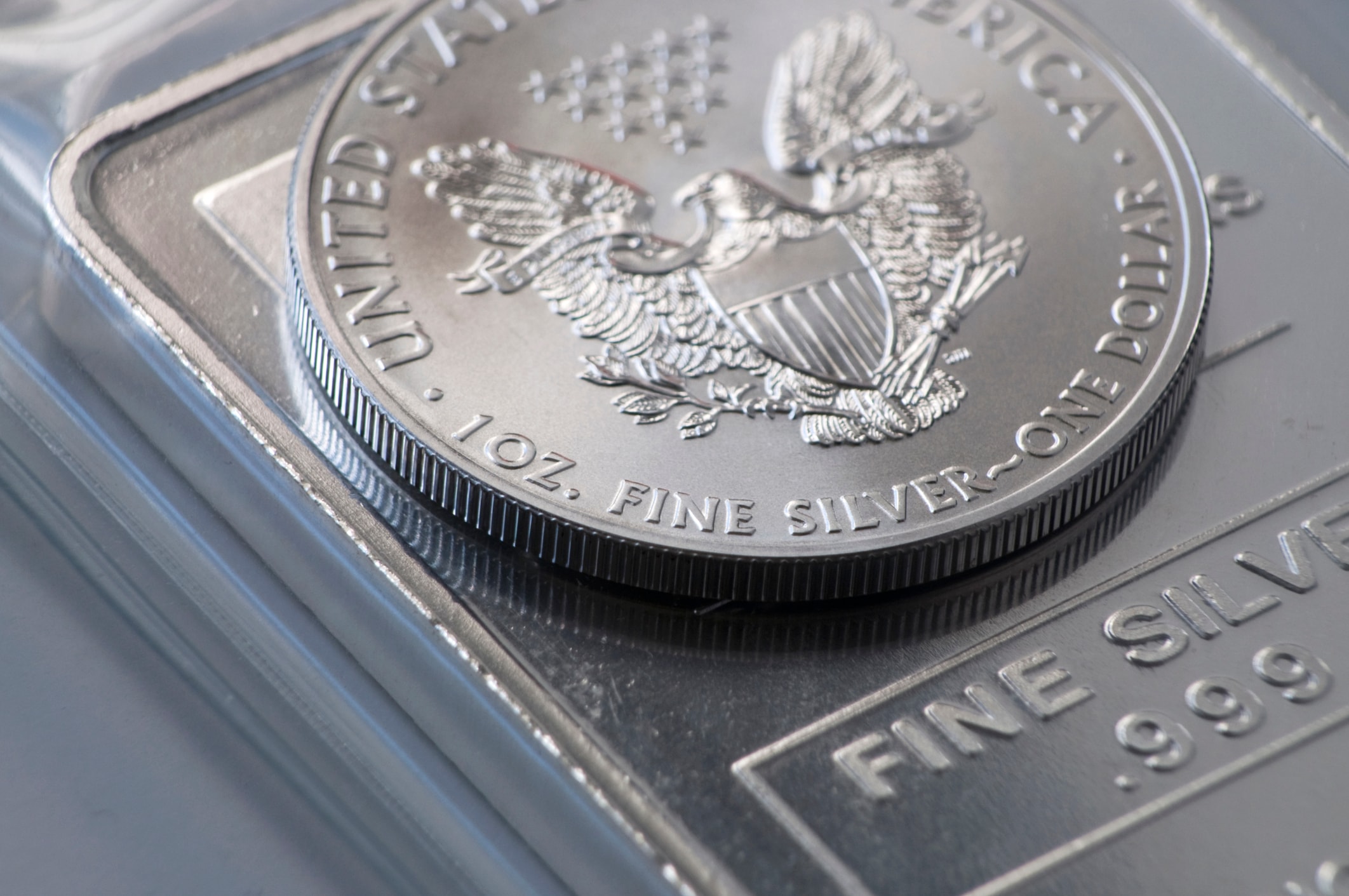
Ready to Invest in Precious Metals?
Whether you're just starting or looking to expand your portfolio, Global Coin offers a diverse selection of gold, silver, and platinum coins. Our team is here to help you navigate market trends, understand how global events may impact prices, and make confident investment choices. Visit us today and discover the value of precious metals as a cornerstone of a resilient financial strategy.
Related Articles
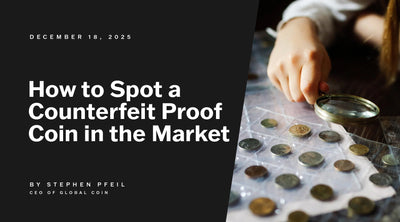
How to Spot a Counterfeit Proof Coin in the Market
How to Spot a Counterfeit Proof Coin in the Market In the world of numismatics, few things hold ...
Discover More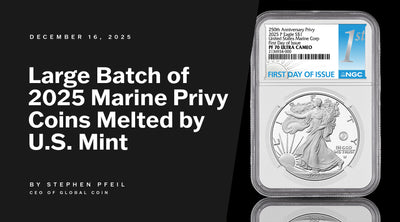
BREAKING NUMISMATIC NEWS: Large batch of 2025 Marine Privy Coins MELTED by U.S. Mint
BREAKING NUMISMATIC NEWS: Large batch of 2025 Marine Privy Coins MELTED by U.S. Mint A historic ...
Discover More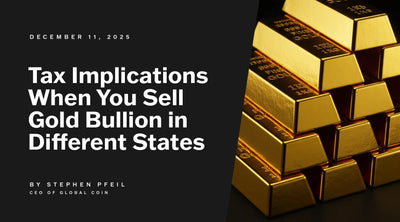
Tax Implications When You Sell Gold Bullion in Different States
Disclaimer: The following content is for informational purposes only and should not be construed ...
Discover More

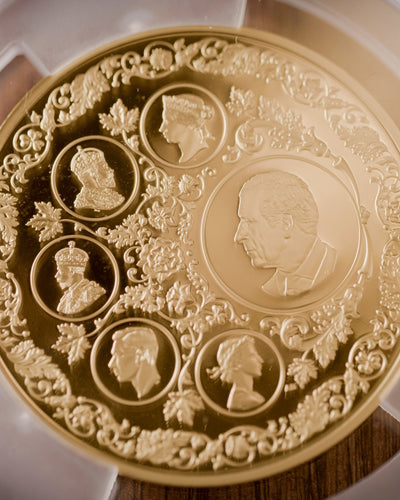
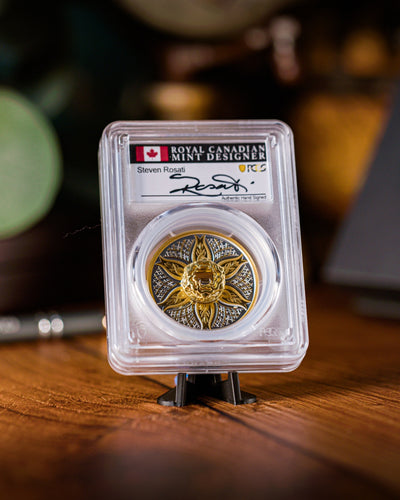
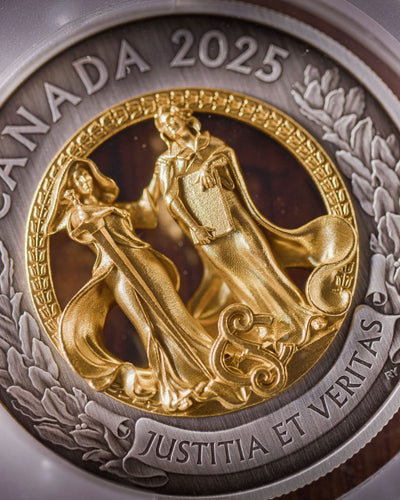

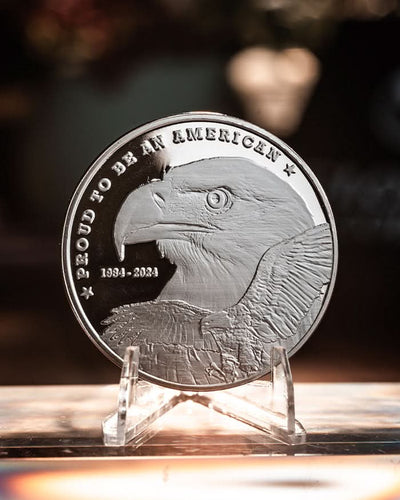
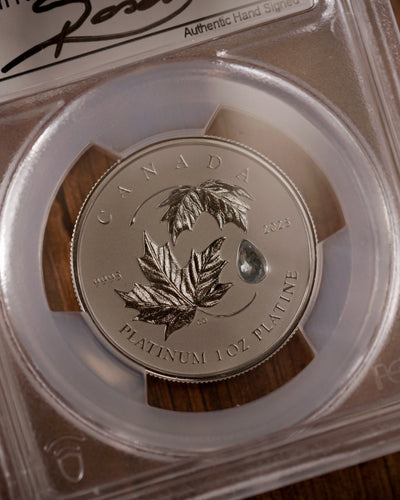
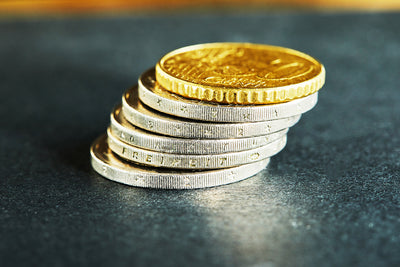
Leave a comment
This site is protected by hCaptcha and the hCaptcha Privacy Policy and Terms of Service apply.